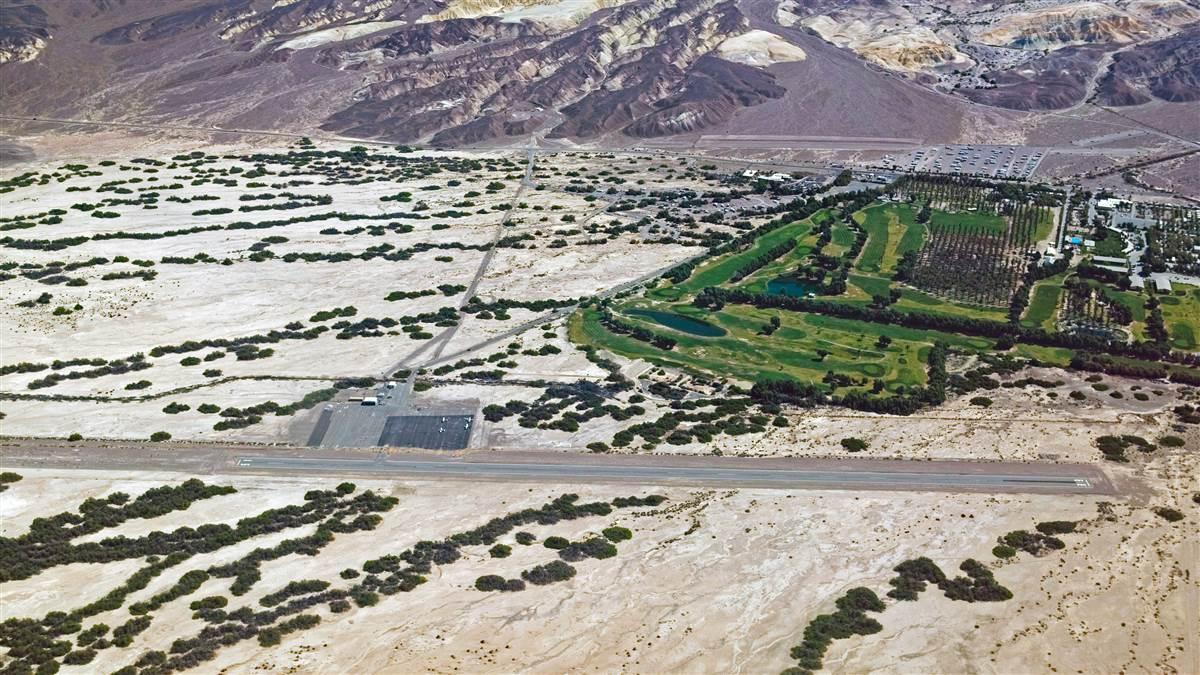Airports: Furnace Creek Airport, Death Valley, California
Land at the lowest elevation airport in the country

That’s no surprise as it’s located in sunny Death Valley National Park, California. And if “furnace” and “death” don’t usually conjure images of peace and relaxation, you’ll find it really is a great spot for a holiday. Park your airplane and spend a few days exploring the largest national park in the lower 48 states, but start by strolling over to the Oasis at Death Valley Resort. Check in there, where you can relax, swim in the pool, play a round of golf, sip a cool drink, and enjoy the sunset over the desert sands.
94 years of hot tarmac
The first airport was built at Death Valley in 1926 by the Pacific Coast Borax Company. Although the airport was used by the mining executives, the company was also building a luxury hotel near a spot called Furnace Creek. So, when the Inn at Death Valley opened in 1927, well-heeled guests—many being Hollywood elite such as Clark Gable and Carole Lombard—would fly in.
Originally, there were two gravel runways, one hangar, and fueling facilities. Although it was operated by the Pacific Coast Borax Company, the airport was located on National Park Service land. Throughout the interwar period, the airport was often visited by Army Air Corps pilots during training. During World War II, the airport was designated the Furnace Creek Emergency Landing Field, which Army and Navy airplanes from nearby military installations could use as an alternate landing site. Abandoned by the military after the war, a new civil airport opened in May 1953, one mile west of the original wartime runways. Today, visiting pilots can walk over the old runways, as they are now used as a very long parking lot for the resort.
Pilots of a certain age may remember Death Valley Days, a Western TV series that ran from 1952 to 1970, sponsored by the Pacific Coast Borax Company. Each week, the host would make a pitch for one of the company’s soap products, such as 20 Mule Team Borax, a laundry additive; Borateem, a powdered bleach; and Boraxo, a powerful powdered hand soap that airplane mechanics might use.
Death Valley National Park
Death Valley National Park is the largest national park in the lower 48 states. It’s also the hottest, with a record temperature of 134 degrees Farenheit, and the driest and lowest elevation in North America. There are plenty of recreational activities, from hiking, camping, biking, and backcountry driving to star gazing, or you could dress up like a Wookiee and visit filming locations of the Star Wars movies.
To get as low as you can go, rent a jeep and head to Badwater Basin, which at minus 279 feet msl is the lowest spot in North America. Ironically, Mount Whitney— the highest point in the lower 48 states—is only 88 miles away. There are many other unusual geologic features to visit in Death Valley, including the Ubehebe Volcanic Craters, the Natural Bridge Canyon, the Mesquite Flat Sand Dunes, and Racetrack Playa—a seasonally dry lake that is famous for the strange phenomenon of rocks that mysteriously move across the surface.
For those interested in the Old West, mining, or soap, visit the remains of the Harmony Borax Works, an 1884 plant where borax was loaded into 20-mule-team wagons for the long haul to the nearest train. Also visit the Borax Museum next to the park visitor center.
Dennis K. Johnson is an aviation writer and pilot living in New York City.


